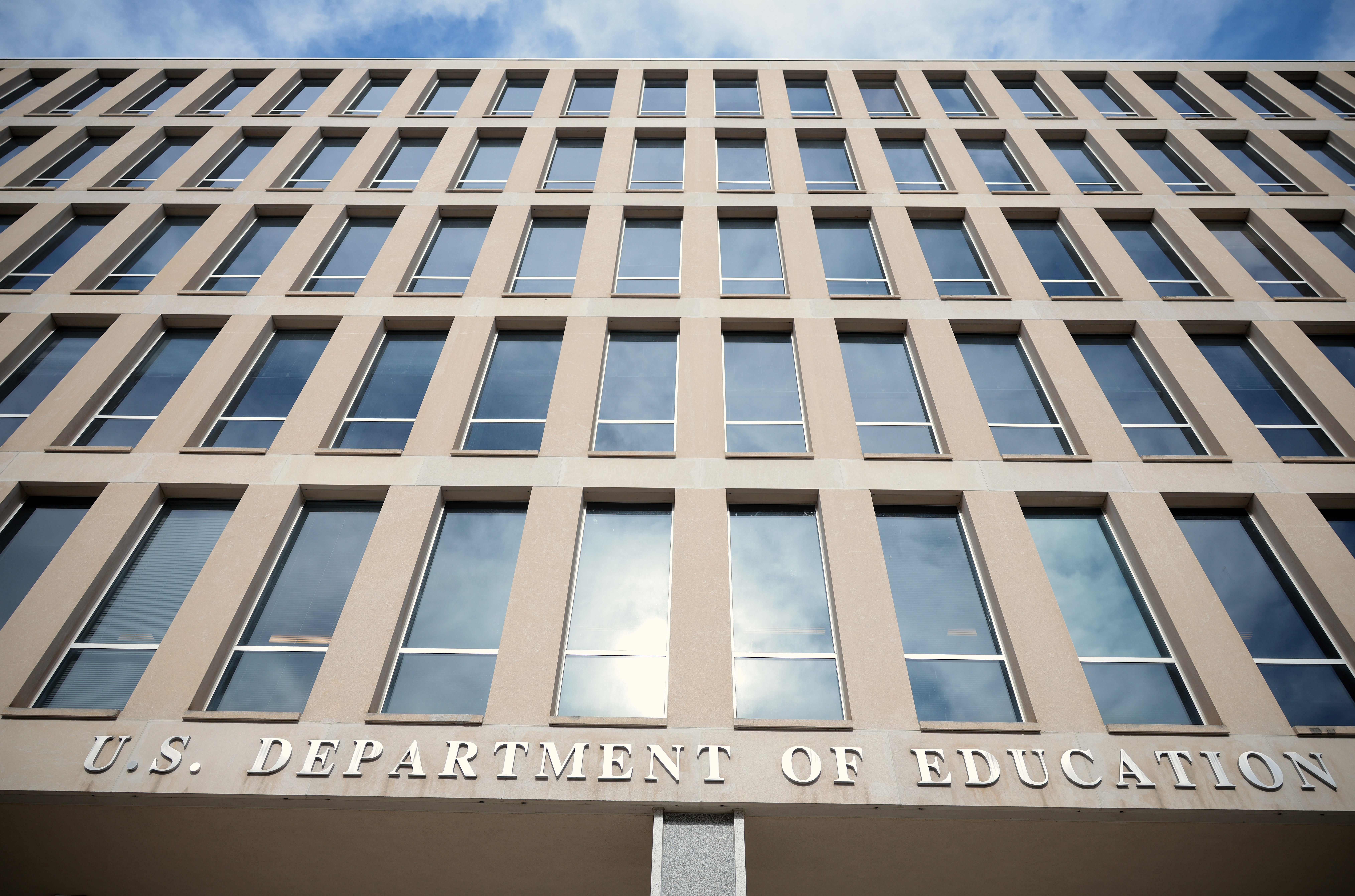President Donald Trump has taken the first steps toward dismantling the Department of Education and directed Education Secretary Linda McMahon to “begin eliminating” the decades-old Cabinet department.
While only Congress — not the president — has the power to close the department, an executive order he signed Thursday instructs McMahon to “take all necessary steps to facilitate the closure of the Education Department.”
The development comes after nearly half of the department’s workforce was terminated last week.
The Education Department has a variety of responsibilities, including enforcing federal civil rights laws and conducting education research. But one of its main functions is distributing and regulating federal student financial aid, including federal student loans.
It’s unclear how McMahon will carry out Trump’s executive order, but the president said that some of the department’s key functions, such as overseeing student loans and Pell Grants, will remain – though they may eventually move to a different department.
Trump has encouraged Congress to pass the necessary legislation to fully close the department.
Here’s what we know about how your student loans could be impacted:

What happens to student loans if the Department of Education closes?
Even if the Education Department shuts its doors, there is no indication federal student loan programs will disappear — and recipients will still need to repay loans, according to Karen McCarthy, vice president of public policy and federal relations at the National Association of Student Financial Aid Administrators.
Another agency — such as the Treasury Department — could absorb the Education Department’s $1.7 trillion loan portfolio if it shuts down.
Trump’s executive order directly hints at this, noting: “The Department of Education is not a bank, and it must return bank functions to an entity equipped to serve America's students.”
But such a massive transition could prove disruptive to borrowers, according to McCarthy.
“It would be an entirely new undertaking for Treasury, and so if that were to happen, it seems really unlikely that untangling all of that and redistributing the work of federal student aid in the student loan servicing space would proceed either quickly or without any disruptions,” McCarthy told The Independent.
The recent major cuts to the federal workforce could also impact the transition.

The Education Department is preparing to send a memo to employees explaining Trump’s executive order is imminent, the Federal News Network reported.
“We are to identify which of the department’s functions, programs, and offices are not mandated by statute, and eliminate them,” the draft memo states. “This reorganization will impact staff, budgets, reporting, and more — and in coming months, we will determine how it can be accomplished with minimal delay and disruption.”
It isn’t guaranteed that Congress will move to close the agency. Trump isn’t the first to call for the department to close or merge with another agency, and Congress has historically rejected those efforts.
Student loan programs are already facing disruptions
Student loan payment programs are already seeing disruptions as the department’s future is uncertain.
The department previously closed applications for income-driven repayment plans — which allow borrowers to craft affordable repayment schedules and identify paths to loan forgiveness — following a court order. This move could stall plans or drive millions of borrowers into unaffordable plans, Forbes reports.
The federal workforce cuts are also impacting other initiatives, including the Total and Permanent Disability Discharge program, which provides loan forgiveness for people with permanent disabilities. The program has been on pause for months due to a servicing platform transition — and while it’s expected to reopen this spring, ongoing cuts could slow it down, according to Forbes.
To prepare for the potential transition, McCarthy says borrowers should update their information with their loan service and get on a feasible repayment plan as soon as possible.

“Any of those paperwork things that you're dealing with with your loan servicer, if there's any of that you've been putting off ... I would absolutely try to get all of those things taken care of,” McCarthy said. “And if you are able to, get yourself into a repayment plan that you anticipate will work for you long term.”
The Independent has contacted the Education Department for comment.
Student debt transfer could lead to further disruptions
Against this backdrop, experts have also warned that transferring the loan accounts of tens of millions of people to another agency will likely worsen the lending system, with federal student loan borrowers already complaining of inaccurate bills and being denied relief for which they’re eligible.
“Borrowers and students need more stability, and this would create chaos,” said Michele Shepard Zampini, senior director of college affordability at The Institute For College Access and Success, in an interview with CNBC. It is estimated that the transfers could take months.

Some 1,315 staffers — around half of the department’s workforce – were terminated last week, leaving only about 2,183 employees.
“We wanted to make sure that we kept all of the right people and the good people to make sure that the outward-facing programs … the grants, the appropriations that come from Congress, all of that are being met, and none of that’s going to fall through the cracks,” McMahon said.
Trump signs order to ‘eliminate’ the DOE — even though he’d need Congress to do it
Everyday tattoos got Venezuelan men ID'd as gang members and deported, lawyers say
Judge blocks Elon Musk’s DOGE team from fraud ‘fishing expedition’ at Social Security
Trump signs executive order to dismantle Department of Education: Live news updates
‘Not hyperbole’: Judges worried for their safety as Trump ups attacks on judiciary
Border csar wants Supreme Court to rule on already-settled birthright citizenship law







